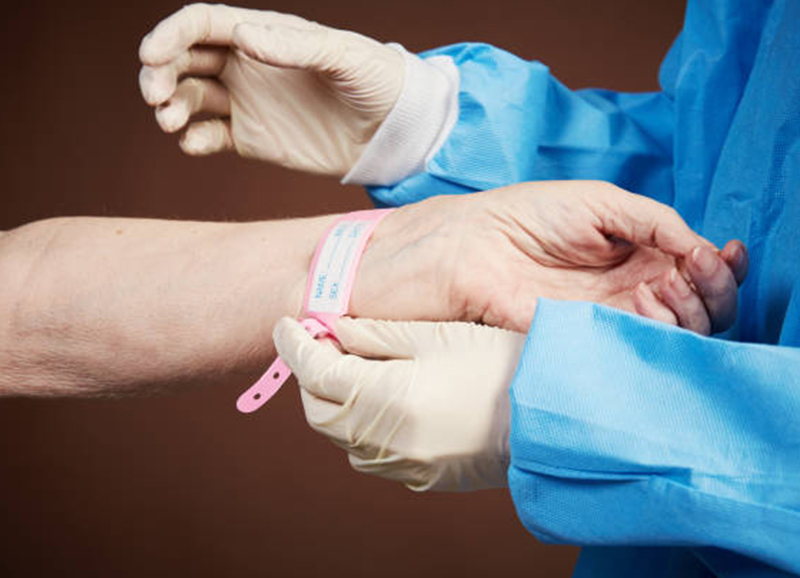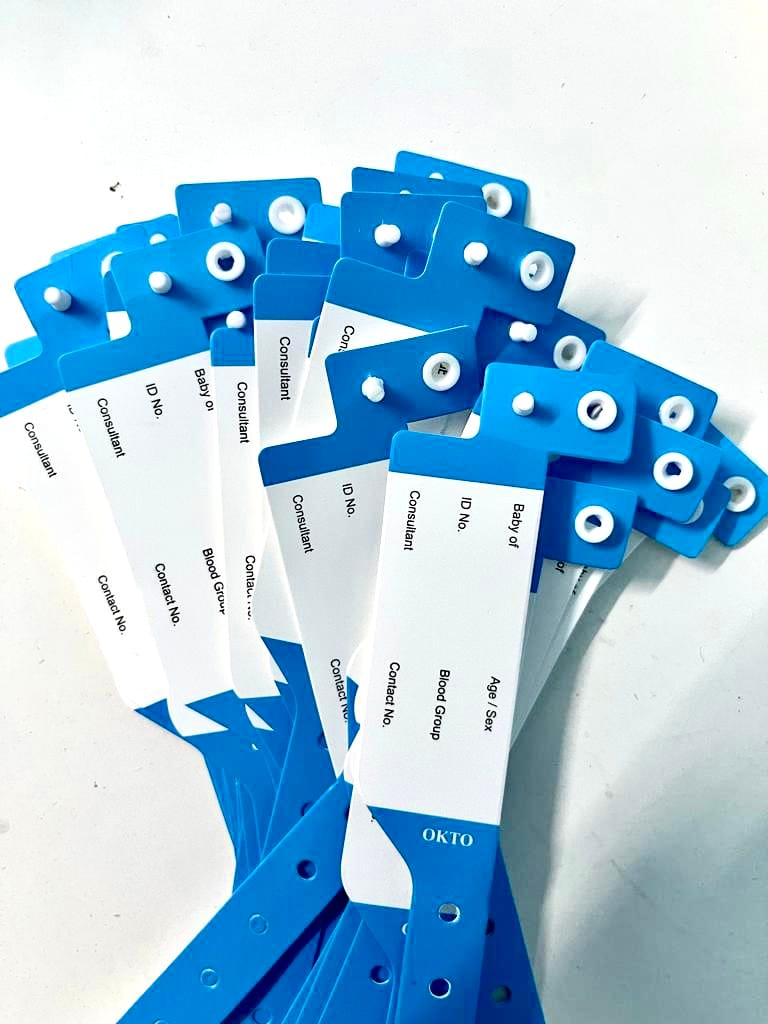Boost Patient Treatment with the Reliability of a Patient Identification Band
Boost Patient Treatment with the Reliability of a Patient Identification Band
Blog Article
Patient Identification Bands: A Trick Device for Improved Medical Accuracy
Client identification bands represent an essential element in the quest of clinical accuracy and client safety within healthcare atmospheres. The real extent of their impact on person results and general medical care quality warrants further evaluation.

Value of Patient Identification
Individual identification is an essential element of health care that ensures the safety and accuracy of medical therapy. Proper recognition procedures are crucial to prevent clinical errors, which can cause negative patient end results, including wrong medication management, misdiagnosis, or unacceptable therapy strategies. The value of precise patient identification can not be overemphasized, as it works as the structure for effective interaction among medical care suppliers.
In environments where numerous patients are receiving therapy at the same time, the risk of identity complication increases. Implementing robust recognition systems aids minimize these risks and boosts individual safety and security. Patient Identification Band. Accurate recognition adds to the honesty of clinical documents, making certain that individual backgrounds, allergies, and previous therapies are correctly linked to the right individual.
Furthermore, compliance with regulative requirements and accreditation needs usually mandates rigorous person identification methods, cultivating a society of liability and quality treatment. Eventually, the value of person identification goes beyond mere management tasks; it is a fundamental aspect of supplying high-quality healthcare that prioritizes patient safety and security and improves clinical end results. Spending in efficient recognition techniques is not just advantageous-- it's essential in today's complex health care landscape.
Kinds Of Individual Recognition Bands
In medical care setups, different sorts of person recognition bands are used to make sure accurate identification and improve safety. These bands work as a crucial tool in avoiding clinical errors associated with client misidentification.
The most common type is the conventional wristband, usually made of resilient plastic and printed with the patient's name, day of birth, and a special identification number. These wristbands are commonly color-coded to convey certain information, such as allergies or other medical conditions.
One more kind is the barcode wristband, which includes a scannable barcode linked to the patient's electronic health document. This modern technology permits effective information access and confirmation during medicine administration and other medical procedures.
Additionally, RFID (Superhigh Frequency Recognition) bands are becoming increasingly prominent. These bands can communicate wirelessly with hospital systems, permitting for real-time monitoring and recognition of individuals, thus simplifying process and boosting individual security.

Benefits for Medical Care Companies
Using individual identification bands uses considerable advantages for doctor, improving both operational efficiency and person safety. These bands offer as a crucial device in simplifying patient management procedures (Patient Identification Band). By making certain accurate recognition, doctor can reduce the threat of management mistakes, such as mislabeling examples or misdirecting treatments, which can bring about expensive delays and difficulties
Moreover, person recognition bands facilitate smooth interaction amongst the medical care team. With standardized and conveniently accessible person information, service providers can make educated choices rapidly, enhancing general process. This effectiveness is particularly important in high-pressure atmospheres such as emergency situation divisions, where time-sensitive treatments are important.
The application of identification bands likewise sustains conformity with regulative standards and finest techniques, thus lessening the this threat of legal repercussions stemming from recognition mistakes. The usage of these bands boosts data precision in electronic health documents, leading to far better care sychronisation and continuity.
Effect On Client Safety
Precise person identification is a cornerstone of healthcare security, dramatically minimizing the probability of errors that can compromise client well-being. Using client recognition bands is important in making certain that each client gets the right therapy, medications, and procedures. These bands function as a trustworthy referral point for health care specialists, minimizing the risk of misidentification, which can lead to significant effects such as incorrect medication management or surgical errors.
The application of standard patient recognition bands adds to a culture of safety and security within medical care setups. By offering clear, easily readable details, these bands aid to enhance the importance of confirming client identification at every stage of treatment. They assist in interaction among team members, making certain that everyone entailed in a person's treatment is aware of their specific demands and requirements.
In enhancement, making use of individual identification bands can enhance the accuracy of electronic health records, additionally minimizing the capacity for errors - Patient Identification Band. By prioritizing client security via effective identification practices, doctor can cultivate trust and confidence among patients, ultimately resulting in far better clinical end results and boosted person satisfaction. The impact of correct client recognition can not be overstated; it is a basic component of top notch medical care shipment
Finest Practices for Application
Efficient implementation of person recognition bands is important for boosting person security and lessening mistakes in healthcare settings. Staff training is crucial; all team members have to recognize the value of exact person identification and the over here treatments for band application.
2nd, the style of the identification bands need to prioritize presence and toughness. Bands should be easy to review, contain crucial person information, and stand up to everyday wear. Using color-coding can even more improve fast identification.


Third, incorporating digital health and wellness records (EHR) with identification band systems can enhance process. Automated informs for inconsistencies in client identification can protect against prospective mistakes before they occur.
Finally, carrying out regular audits and responses sessions will certainly help identify areas for improvement. Involving staff in these discussions cultivates a culture of security special info and responsibility.
Conclusion
In verdict, patient identification bands play a critical role in improving clinical accuracy and guaranteeing person safety within healthcare systems. Taking on finest techniques for implementation cultivates a culture of safety and security, ultimately leading to improved patient end results and better trust fund in health care solutions.
Patient recognition bands represent an essential component in the quest of clinical accuracy and client safety within medical care atmospheres.Utilizing individual identification bands uses substantial benefits for healthcare carriers, improving both functional performance and client security. By focusing on person security via reliable recognition methods, health care providers can foster trust and self-confidence amongst individuals, eventually leading to much better professional results and enhanced client complete satisfaction.Efficient implementation of person identification bands is important for boosting patient safety and reducing mistakes in healthcare setups.In conclusion, individual recognition bands play an important function in improving medical precision and making sure person security within healthcare systems.
Report this page